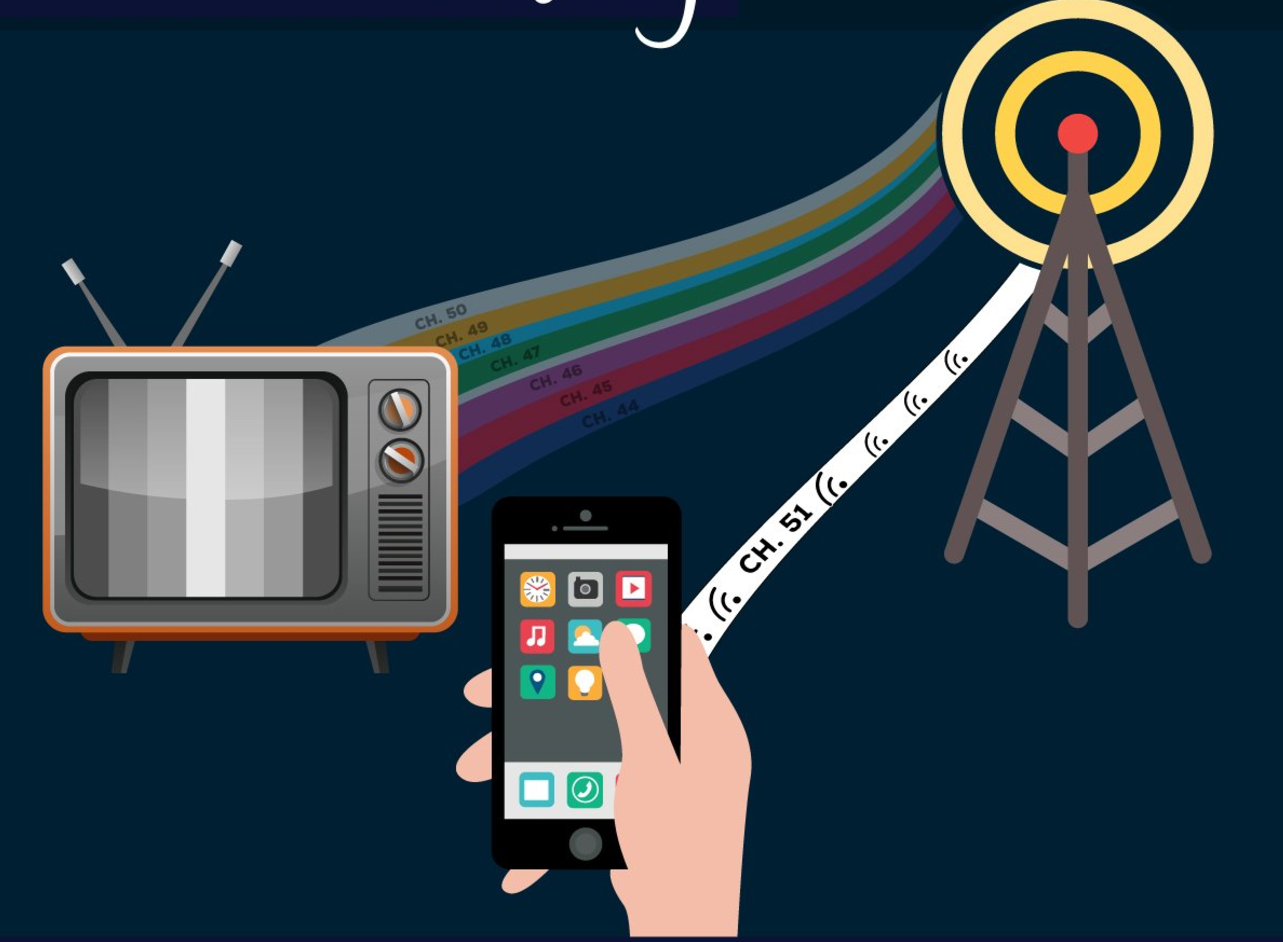We recently wrote about the National Association of Broadcasters (NAB) and other critics’ opposition to using television white spaces (TVWS) as one of the ways to close the digital divide in rural America. Since Federal Communications Commission (FCC) Chairman Ajit Pai has deemed August “Rural Broadband Month,” citing the impact on 23.4 million rural Americans without access to broadband, we are growing increasingly incredulous with the opposition from NAB and others.
If NAB and their surrogates are to be believed, using TV white spaces to help Americans living in rural areas will interrupt your favorite TV show or even risk your health and safety! That, of course, is not the real story. They’d like you to believe that one-way information sharing through TV broadcasts brings as much utility as our members’ apps, connected devices, and other innovations supported by robust broadband connectivity. We’d like to set the record straight and address the big gaps in NAB’s increasingly dire message:
- Broadcasters already have more than 92 percent of the channels. The fact is that broadcasters already control 210 MHz of spectrum out of 228 MHz in the TV band and every full power, and Class A station is guaranteed a channel. What’s at issue with TVWS is merely 18 MHz. That’s equivalent to 35 channels reserved for broadcasters’ one-way delivery of television programming versus a mere three channels for those serving the public by using TV white spaces for broadband that can enable two-way interactive telemedicine, remote education, personal communication via voice, video, text, streaming media for learning, news, entertainment, agricultural sensors, and more. If these three channels are not reserved for public use, they would be unnecessarily underused or unused.
- TV white spaces will not interfere with medical devices. Everyone recognizes the importance of ensuring that critical life-safety systems are protected from harmful interference, and the FCC has adopted strong technical rules and power limits to ensure that TV white spaces devices will not interfere with medical devices. These rules include required exclusion zones around the applicable medical facilities and the industry is committed to working with the FCC and the healthcare interests to ensure these protections work.
- Broadcasters do not lose their ability to alert the public during life threatening emergencies. The fact is that full-power broadcasters like ABC, CBS, FOX, and NBC are guaranteed, by law, a channel assignment. Class A low-power stations are also assured a channel, but Congress decided that other low-power broadcasters are not guaranteed a new channel assignment. Even so, analysis following the recently concluded incentive auction shows that protecting a single white space in each market will not have a significant impact on them. Regardless, it is fully within the power of the broadcasters to work together to more efficiently use spectrum through channel sharing. Many of the stations that participated in the incentive auction are doing just that – realizing a financial benefit from the auction while remaining on the air through more efficient use of spectrum.
- The government will not lose revenue by making TV white spaces available for the public good. The fact is that TV white spaces would not be given to any company on an exclusive basis. They would be made available for anyone to use for broadband, just like wi-fi. Moreover, broadcasters don’t pay for spectrum, and TV white spaces do not take away any spectrum. So, the government would not lose any revenue. And it was this spectrum that was for sale in the FCC’s auction of TV airwaves. White spaces are the portions that bidders declined to buy and that broadcasters are not using.
Access to today’s broadband internet is critical to fully participate in the 21st century digital economy. As more and more elements of daily life and work are transformed by the apps and innovations created by our members and supported by the internet, cloud services, and wireless mobility, those without are in serious jeopardy of being left out. We cannot afford to leave 23.4 million people in rural America behind.
We by no means doubt the value of broadcasting, but when broadband access in rural America will improve healthcare, education, and agriculture, connect small businesses to new markets, and even offer broadcasters a new avenue to distribute their content, why would NAB and the broadcasters it represents ask policymakers to turn away from this opportunity? It’s worth asking what the broadcasters stand to gain from maintaining the digital divide.
